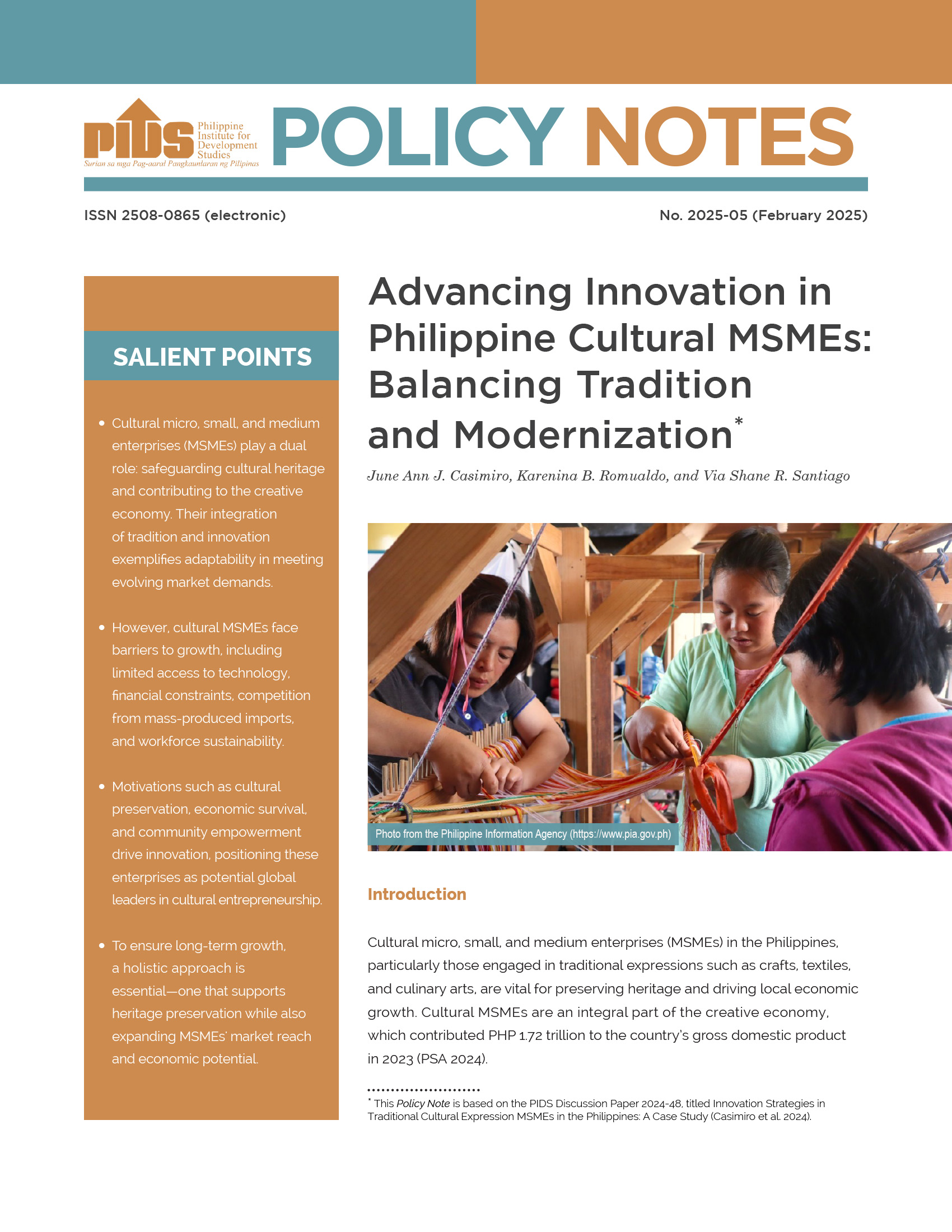The Philippine economy can grow faster by integrating manufacturing, agriculture and the services sectors, according to Trade and Industry Undersecretary for Industry Development Ceferino Rodolfo.
This was stressed at the recent forum for the implementation of the government’s Comprehensive National Industry Strategy (CNIS), which details the country’s overall industrial development strategy that links the manufacturing sector with agriculture and services sectors.
“So far we have achieved great strides in the development of industries because of close collaboration with stakeholders. The challenge to us then is to leverage on our strong industry performance in order to stimulate growth in agriculture and to demand greater efficiency from manufacturing-related services sectors. With this collaboration, we expect our economy to grow at a faster rate,” Rodolfo said.
The CNIS aims to achieve an additional two percent Gross Domestic Product (GDP) growth for the country in the next six years.
A product of three-year collaborative efforts led by DTI Assistant Secretary Rafaelita Aldaba and research experts from the Philippine Institute for Development Studies (PIDS), the CNIS was presented during the 14th Trade and Industry Development Updates (TID Updates) forum yesterday (28 March 2016) to members of the private sector, academe, and relevant government agencies. Organized by the Philippine Board of Investments (BOI), the industry development and investments promotion arm of the DTI, the forum gathered insights and inputs on the CNIS and how this strategy can further move the economy to become a regional manufacturing, services, and agribusiness hub by 2022.
During the forum, Assistant Secretary Aldaba identified manufacturing, agribusiness, tourism, infrastructure, and logistics and IT business process management as the core industries which are expected to play key roles in realizing economic growth.
PIDS research fellows Roehlano Briones and Ramoette Serafica presented the current state of the agribusiness and services industries in the country and how the CNIS can move these industries to grow and be globally competitive.
Briones said that while the manufacturing industry has been performing well, at six percent over the past five to six years, agribusiness is barely moving. Serafica on the other hand said that while the services sector has been able to sustain its strong growth, a majority part of this is focused on the IT-BPM sector while the rest of the subsectors of services have narrow growth.
“Given the current economic structure, we can realize sustainable growth by successfully integrating the agribusiness and services sectors. The question being asked about the Philippines is not: Will the country continue to experience growth? But rather, by how much faster can we grow? It depends on how our CNIS can move our three sectors into a mutually-reinforcing virtuous cycle of growth. Continuous dialogue among the different sectors is key. Our CNIS is not just a document, it represents an inclusive process,” Rodolfo said.//
This was stressed at the recent forum for the implementation of the government’s Comprehensive National Industry Strategy (CNIS), which details the country’s overall industrial development strategy that links the manufacturing sector with agriculture and services sectors.
“So far we have achieved great strides in the development of industries because of close collaboration with stakeholders. The challenge to us then is to leverage on our strong industry performance in order to stimulate growth in agriculture and to demand greater efficiency from manufacturing-related services sectors. With this collaboration, we expect our economy to grow at a faster rate,” Rodolfo said.
The CNIS aims to achieve an additional two percent Gross Domestic Product (GDP) growth for the country in the next six years.
A product of three-year collaborative efforts led by DTI Assistant Secretary Rafaelita Aldaba and research experts from the Philippine Institute for Development Studies (PIDS), the CNIS was presented during the 14th Trade and Industry Development Updates (TID Updates) forum yesterday (28 March 2016) to members of the private sector, academe, and relevant government agencies. Organized by the Philippine Board of Investments (BOI), the industry development and investments promotion arm of the DTI, the forum gathered insights and inputs on the CNIS and how this strategy can further move the economy to become a regional manufacturing, services, and agribusiness hub by 2022.
During the forum, Assistant Secretary Aldaba identified manufacturing, agribusiness, tourism, infrastructure, and logistics and IT business process management as the core industries which are expected to play key roles in realizing economic growth.
PIDS research fellows Roehlano Briones and Ramoette Serafica presented the current state of the agribusiness and services industries in the country and how the CNIS can move these industries to grow and be globally competitive.
Briones said that while the manufacturing industry has been performing well, at six percent over the past five to six years, agribusiness is barely moving. Serafica on the other hand said that while the services sector has been able to sustain its strong growth, a majority part of this is focused on the IT-BPM sector while the rest of the subsectors of services have narrow growth.
“Given the current economic structure, we can realize sustainable growth by successfully integrating the agribusiness and services sectors. The question being asked about the Philippines is not: Will the country continue to experience growth? But rather, by how much faster can we grow? It depends on how our CNIS can move our three sectors into a mutually-reinforcing virtuous cycle of growth. Continuous dialogue among the different sectors is key. Our CNIS is not just a document, it represents an inclusive process,” Rodolfo said.//












